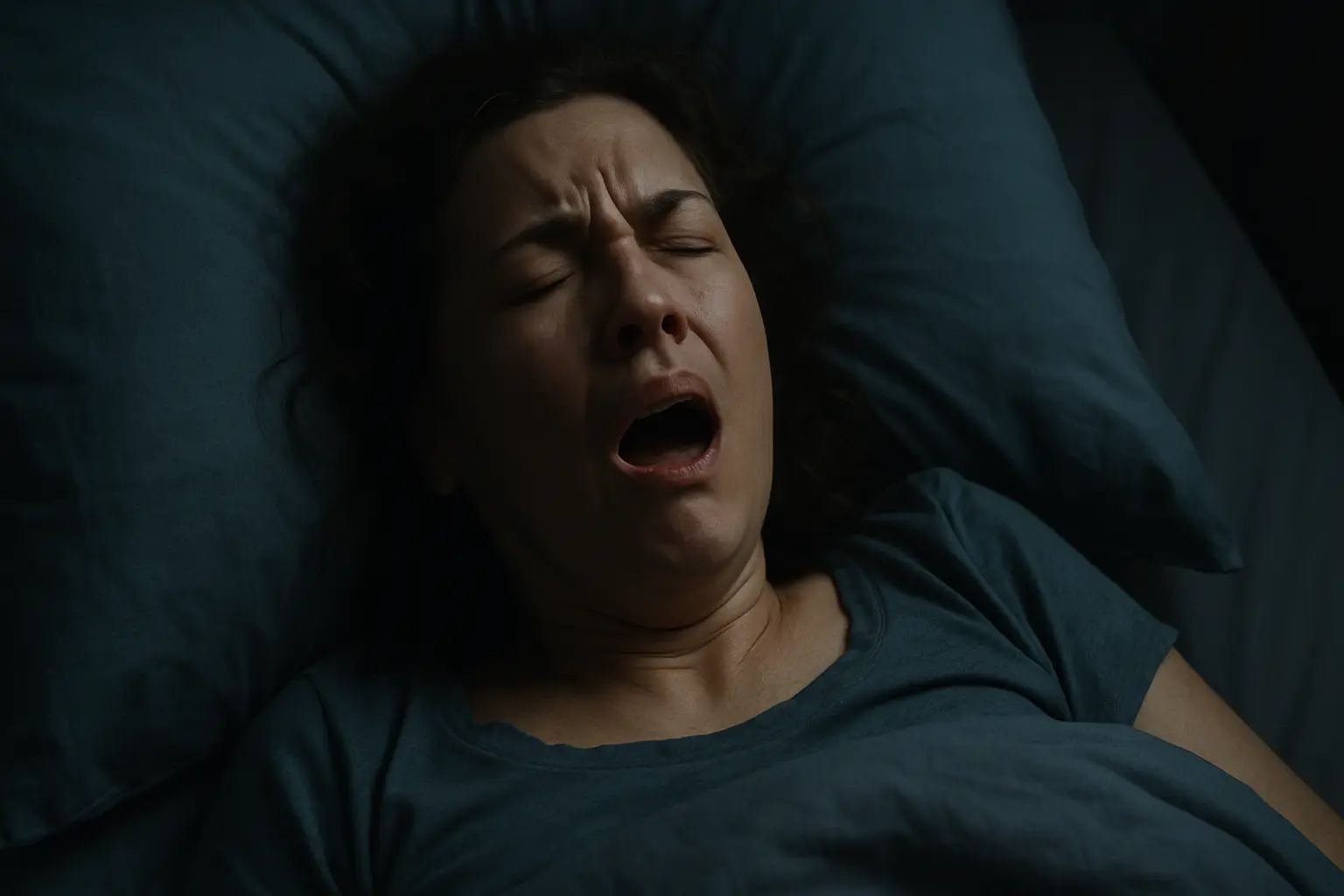Sleep Apnea in Women: The Often Overlooked Risk
Sleep apnea is frequently associated with men, but studies show that women are underdiagnosed and underreported.
Symptoms can differ, and the subtle signs often go unnoticed, leading to long-term cardiovascular and metabolic risks.
Unique Symptoms in Women
While men may display loud snoring and observed apnea events, women often present with:
- Daytime fatigue and irritability
- Morning headaches
- Insomnia and difficulty maintaining sleep
- Nighttime sweating
- Subtle snoring (may be intermittent)
According to the American Sleep Association (2023), nearly 1 in 4 women with moderate OSA remain undiagnosed due to atypical symptom presentation.
Data Snapshot: OSA in Women vs. Men
| Feature | Women | Men |
|---|---|---|
| Loud snoring | 52% | 78% |
| Observed apneas | 35% | 70% |
| Daytime fatigue | 68% | 55% |
| Insomnia | 42% | 25% |
| Cardiovascular risk | Moderate | High |
Women may experience more sleep fragmentation and subtle hypoxia, contributing to cardiovascular strain and metabolic changes over time.
Risk Factors Specific to Women
- Hormonal changes — Pregnancy, menopause, and hormonal therapy can influence airway stability.
- Weight distribution — Fat accumulation in the neck and torso can increase airway obstruction.
- Age — Postmenopausal women show a higher prevalence of OSA.
- Comorbidities — Hypertension, diabetes, and hypothyroidism increase risk.
Early Detection Using AI Sleep Tools
Apps like SnailSleep allow women to monitor snoring, breathing patterns, and oxygen saturation unobtrusively at home.
Example Insight:
"Light snoring and intermittent pauses detected; oxygen dips recorded at 91–93% saturation. Heart rate elevated during apneic events."
Early detection empowers lifestyle adjustments, positional therapy, and consultation with a sleep specialist before severe complications develop.
Management Strategies
- Positional therapy — Side sleeping often reduces airway collapse.
- Weight management — Modest weight loss can significantly improve OSA severity.
- Oral devices or CPAP — When indicated, these provide mechanical airway support.
- Exercise and muscle strengthening — Throat and tongue exercises can improve airway tone.
- Routine monitoring — Track trends with SnailSleep to evaluate effectiveness.
Real-Life Case: Laura's Journey
Laura, a 46-year-old accountant, had intermittent insomnia and mild snoring.
After using SnailSleep for two weeks, the app detected frequent short breathing pauses and fragmented sleep patterns.
With positional therapy, lifestyle adjustments, and medical consultation, her snoring decreased by 55% and her daytime fatigue improved significantly.
Related Articles
- When Snoring Gets Dangerous: Early Warning Signs of Sleep Apnea
- The Role of Weight and Obesity in Snoring and Sleep Apnea
- Home Sleep Apnea Screening with SnailSleep: A Scientific Approach

